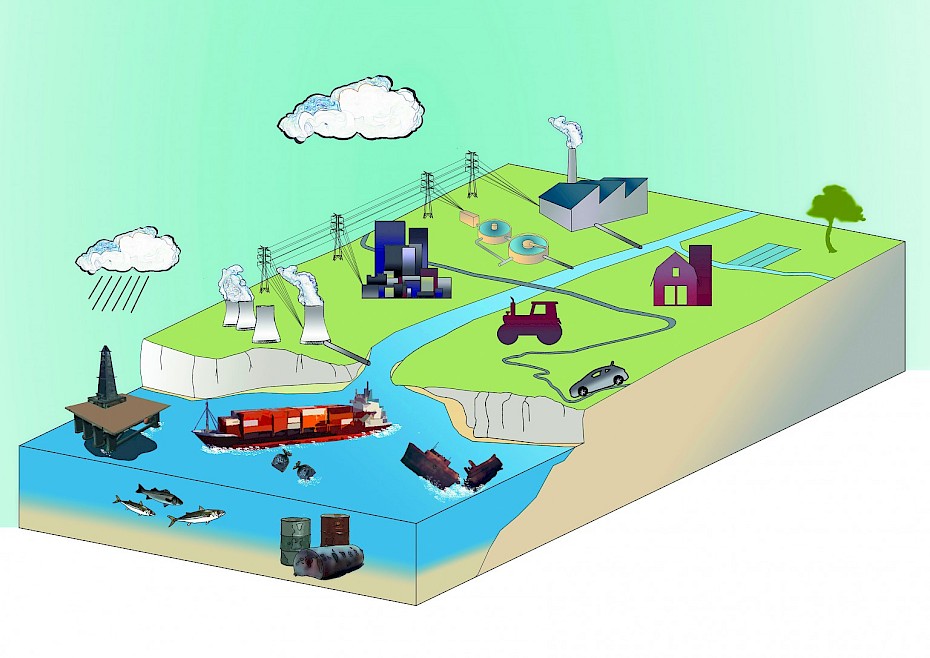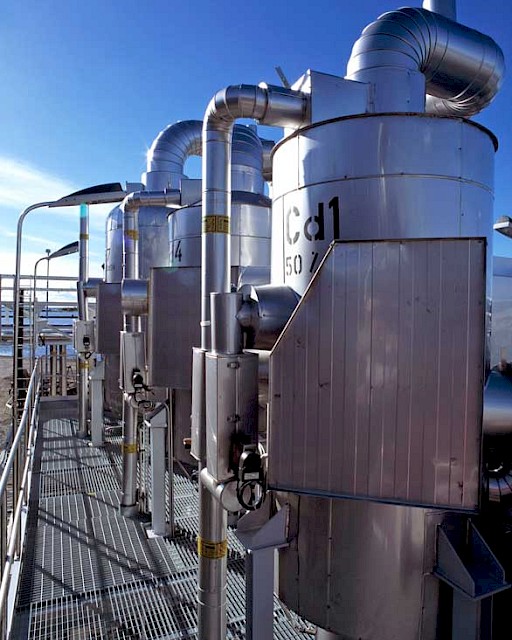Hazardous Substances
Artificial and naturally occurring chemicals end up in the North-East Atlantic as a result of land-based and sea-based human activities. Some of these chemicals are hazardous for the marine environment. The OSPAR Hazardous Substances Strategy is to prevent pollution by hazardous substances, by eliminating their emissions, discharges and losses, to achieve levels that do not give rise to adverse effects on human health or the marine environment.
Our latest assessments: Quality Status Report 2023
HAZARDOUS SUBSTANCES THEMATIC ASSESSMENT
Briefing note on the thematic assessment
Inputs of Mercury, Cadmium and Lead via Water and Air to the OSPAR Maritime Area: Total inputs of the heavy metals mercury, cadmium and lead have reduced since 1990. However, improved analytical procedures for mercury and cadmium since 1990 make it difficult to be certain what proportion of observed changes are due to reduced discharges and emissions.
Inputs of Nutrients to the OSPAR Maritime Area: Since the QSR 2010, nitrogen and phosphorus inputs to the OSPAR Maritime Area have continued to decrease. Waterborne inputs to the Arctic Waters (Region I) increased substantially however, but the nitrogen increase is masked by a larger decrease in atmospheric deposition. Substantial reductions in inputs to the North Sea have been achieved.
Status and Trend for Heavy Metals (Mercury, Cadmium and Lead) in Fish, Shellfish and Sediment: In most areas, concentrations of lead in fish and shellfish are above background levels, and mercury above the environmental threshold. Cadmium was above background levels in northern and eastern areas. Despite bans, concentrations in biota are mostly increasing, particularly in the Greater North Sea (Region II). Concentrations in sediments are often above the environmental thresholds but decreasing in most subregions.
Status and Trends in the Concentrations of Polycyclic Aromatic Hydrocarbons (PAHs) in Shellfish and Sediment: Although mean concentrations of polycyclic aromatic hydrocarbons (PAHs) in shellfish and sediment, and PAH bile metabolites in fish, in most assessed areas are above background concentrations, they are below levels likely to harm marine species. Concentrations are decreasing or stable in all, but one (Irish and Scottish West Coast sediment) area assessed.
Status and Trends of Polybrominated Diphenyl Ethers (PBDEs) in Biota and Sediment: Biota sites have good geographical coverage, sediment sites are more limited. PBDEs in sediment and biota have been stable (54% of assessed areas) or declining (46%) for the past 20 years. Concentrations are below thresholds (FEQGs) for all assessment areas and congeners, except BDE209 in Irish Sea sediment, and should not cause adverse effects to marine wildlife.
Status and Trends of Polychlorinated Biphenyls (PCB) in Fish, Shellfish and Sediment: Polychlorinated biphenyls (PCBs) were banned in many countries in the mid-1980s. Although local problems remain, PCB concentrations in sediment and biota have decreased in most OSPAR assessment areas. With the exception of the most toxic congener (CB118), concentrations are below the level at which they could present an unacceptable risk to the environment.
Status and Trends of Organotin in Sediments in the Southern North Sea: Following the total ban on tributyltin in marine applications, mean concentrations in sediment have measurably reduced (with a trend of approx. -10% per year) in the Southern North Sea but no monitoring station is yet significantly below the EQS value proposed by Sweden of 0,8 µg kg-1 at 2,5% OC (https://www.ospar.org/documents?v=43227) assessment criteria. The need for follow-up of the situation is still apparent.
Status and Trends in the Levels of Imposex in Marine Gastropods (TBT in Shellfish): Following bans on the use of tributyltin and other organotins in antifouling paints there has been a marked improvement in the reproductive condition of marine snails since the Quality Status Report 2010.
Pilot Assessment of Status and Trends of Persistent Chemicals in Marine Mammals: Polychlorinated biphenyls (PCBs) are present in marine mammals living in all five OSPAR Regions. Toothed-cetaceans and some subpopulations of pinnipeds present moderate to high ranges of PCB concentrations, often surpassing the estimated toxicity thresholds for the onset of reproductive incapacity. The ranges of PCB concentrations of baleen whales are always below the estimated toxicity thresholds.

OSPAR implements this Strategy progressively by making every endeavour to move towards the target of the cessation of discharges, emissions and losses of hazardous substances. The hazardous substances-related work is implemented by OSPAR’s Hazardous Substances and Eutrophication Committee (HASEC).
OSPAR’s work on hazardous substances comprises:
- identifying substances that are of concern for the marine environment
- monitoring and assessing the sources and pathways of contaminants and their concentrations and effects in the marine environment, and
- identifying actions and measures required to achieve the Strategy objectives.
For OSPAR purposes, hazardous substances are defined as substances that are persistent, liable to bioaccumulate and toxic (PBT substances), or which give rise to an equivalent level of concern as the PBT substances. For example, this might be concern that they can interfere with the hormone system of organisms. OSPAR identifies substances on the market that pose a risk for the marine environment and maintains a List of OSPAR Chemicals for Priority Action and a List of Substances of Possible Concern. These Lists are undergoing substantial review and revision in 2021/22.
OSPAR has adopted control measures promoting the application of best available techniques and associated emission and discharge limit values for the most important industries. Measures on substitution of hazardous substances, use bans or restrictions, and best environmental practices, address releases of hazardous substances from diffuse sources, such as consumer products.
The data for contaminants in biota and in sediment are assessed annually, using the OSPAR Contaminants App: https://ocean.ices.dk/OHAT/
OSPAR has developed a monitoring strategy that sets out the best way to collect data and information on sources, pathways, concentrations and effects, in order to track progress towards the strategic objectives for hazardous substances through annual assessments. This includes long-term data collection under the OSPAR monitoring programmes for:

